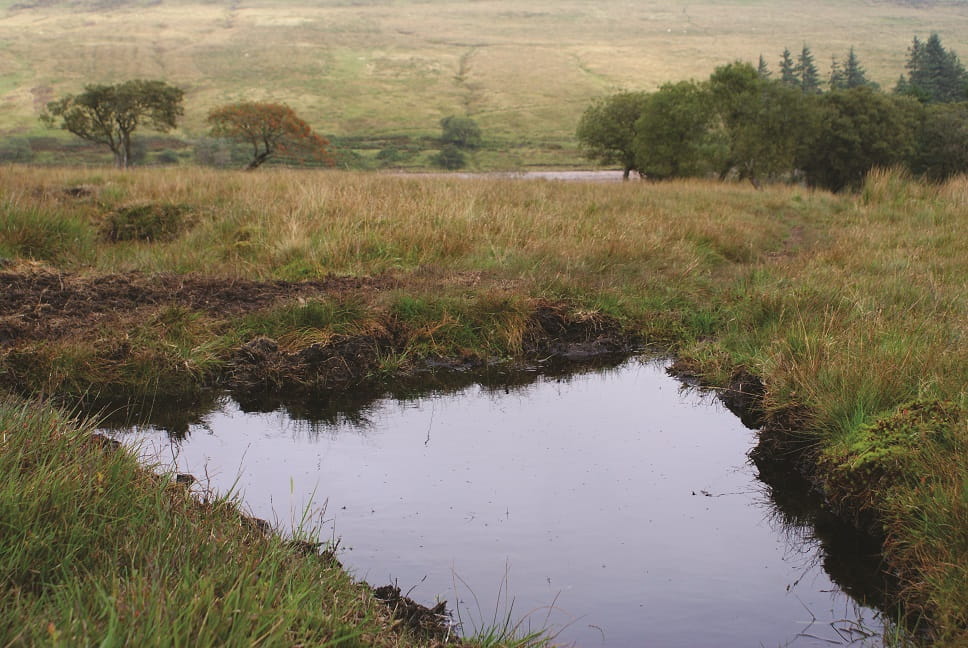
Wetlands: Part of the solution for nature
21 May 2021
Wales is home to some of the most wonderful wildlife, and at Dwr Cymru, we want to make sure that local habitats and environments are not only protected, but improved and given space to thrive in a changing world.
We already protect important habitats and species at Sites of Special Scientific Interest (SSSI) across our region, and by 2025 we will deliver even more. We plan to invest £200m into reducing nutrient loads to rivers over the next four years . We are also doing more than that to help biodiversity; we are altering the way we invest and the types of engineering projects we design and build. We published our latest Biodiversity Plan in December 2020. It is called “Making time for nature 2020: Welsh Water’s revised plan for maintaining and enhancing biodiversity", you can read all about that here.
I am Vyvyan, and I am Dwr Cymru’s Wetlands Project Manager. It’s part of my job is to advance the regulations and logistics linked to deliver effective Nature Based Treatment Solutions. By Nature Based Solutions (NBS), we mean solutions that are inspired and supported by nature and use, or mimic natural processes to contribute to the improved management and treatment of water or waste water. An example of NBS (sometimes called Green Infrastructure) is a wetland. Wetlands are forming an important part of our future investments as they can provide reliable ‘cleaning’ of water, in a sustainable and low carbon way.
How does a wetland contribute to our goals?
A wetland treatment site is a series of interconnected ponds. These ponds provide natural filtering process to further improve the quality of water being returned to the river. They remove the unwanted chemicals and nutrients for example ammonia, nitrogen and phosphorus, naturally. Such nutrients are naturally occurring, but in large quantities they can cause nutrient pollution and can impact streams, rivers, coastal waters. Too much nitrogen and phosphorus in the water causes algae to grow faster than ecosystems can handle. Previously, water companies have tended to use very engineered solutions to reduce or remove these nutrients, but we are now changing to focus more on natural solutions to provide a low carbon and reliable alternative.
Added benefit of wetlands
As well as additional treatment, Wetlands provide amazing habitats; they help support the lifecycle of a wide range of animals; attracting breeding birds, amphibians, bats, water voles and serving as ecological nurseries for many species. They can also have brilliant social benefit to local communities. By creating a safe accessible to thriving green space like wetlands, has shown to contribute to positive moods, reduced stress, and allows for better engagement with your local area.
Where next for wetlands?
At Dwr Cymru, we are working hard with our Environmental Regulators (NRW and EA), to build wetlands into our regular programme of works. We are also working with some brilliant Partners and Environmental NGOs, like the River’s Trust and Ground Works Wales, to help advance our delivery approaches.
As well as including wetlands and other NBS in our treatment approaches to help remove particular nutrients; we are working with partners, particularly in the River Wye, to enable them to deliver wetlands to recue additional nutrients, particularly Phosphorous in the catchment. On top of this, we are investigating the use of wetlands to mitigate the impact from Combined Storm Overflows. During heavy rain storms, more water can find its way into our pipes than they are designed to cope with, so they have been designed to safely relieve the pressure on our systems, using CSOs. But we can help by reducing the impact of the ‘spill’ to the environment, by pre-treating the wastewater before it joins the water course. Using low carbon methods like wetlands are a brilliant approach, sometimes in combination with many other engineered solutions.
We hope to increase our use of wetlands, along with other NBS, and will continue to work with local academic partners to advance our understanding of their great potential.
To find out more about where we hope to build wetlands in the future, get in touch.

